Founded in 1903, Harley-Davidson is one of two major American motorcycle manufacturers to survive the Great Depression along with its historical rival, Indian Motorcycles.
The company has survived numerous ownership arrangements, subsidiary arrangements, periods of poor economic health and product quality, and intense global competition to become one of the world’s largest motorcycle manufacturers and an iconic brand widely known for its loyal following.

The original 1903 Harley-Davidson motorcycle factory.
In 1901, 20-year-old William S. Harley drew up plans for a small engine with a displacement of 116 CC and four-inch (102 mm) flywheels designed for use in a regular pedal-bicycle frame.
Over the next two years, he and his childhood friend Arthur Davidson worked on their motor-bicycle using the northside Milwaukee machine shop at the home of their friend Henry Melk.
It was finished in 1903 with the help of Arthur’s brother Walter Davidson. Upon testing their power-cycle, Harley and the Davidson brothers found it unable to climb the hills around Milwaukee without pedal assistance, and they wrote off their first motor-bicycle as a valuable learning experiment.

The three began work on a new and improved machine with an engine of 405 CC with 9.75 in (24.8 cm) flywheels weighing 28 lb (13 kg).
Its advanced loop-frame pattern was similar to the 1903 Milwaukee Merkel motorcycle designed by Joseph Merkel, later of Flying Merkel fame.
The bigger engine and loop-frame design took it out of the motorized bicycle category and marked the path to future motorcycle designs.
They also received help with their bigger engine from outboard motor pioneer Ole Evinrude, who was then building gas engines of his own design for automotive use on Milwaukee’s Lake Street.
The prototype of the new loop-frame Harley-Davidson was assembled in a 10 ft × 15 ft (3.0 m × 4.6 m) shed in the Davidson family backyard.
Most of the major parts, however, were made elsewhere, including some probably fabricated at the West Milwaukee railshops where oldest brother William A. Davidson was toolroom foreman.
This prototype machine was functional by September 8, 1904, when it competed in a Milwaukee motorcycle race held at State Fair Park. Edward Hildebrand rode it and placed fourth in the race.

In January 1905, the company placed small advertisements in the Automobile and Cycle Trade Journal offering bare Harley-Davidson engines to the do-it-yourself trade. By April, they were producing complete motorcycles on a very limited basis.
That year, Harley-Davidson dealer Carl H. Lang of Chicago sold three bikes from the five built in the Davidson backyard shed. Years later, the company moved the original shed to the Juneau Avenue factory where it stood for many decades as a tribute.
In 1906, Harley and the Davidson brothers built their first factory on Chestnut Street (later Juneau Avenue), at the current location of Harley-Davidson’s corporate headquarters.
The first Juneau Avenue plant was a 40 ft × 60 ft (12 m × 18 m) single-story wooden structure. The company produced about 50 motorcycles that year.
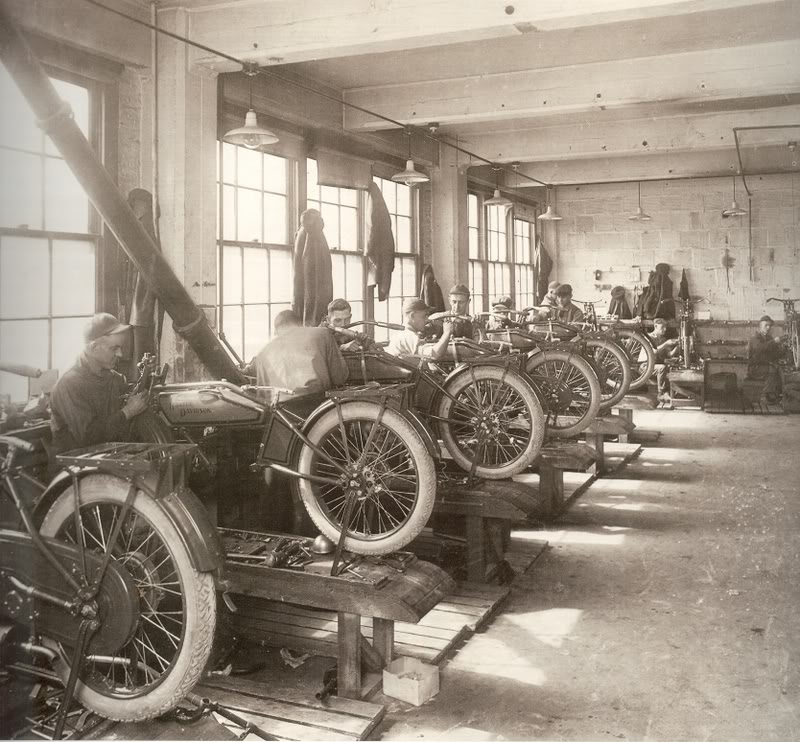
In 1907, William S. Harley graduated from the University of Wisconsin–Madison with a degree in mechanical engineering.
That year, they expanded the factory with a second floor and later with facings and additions of Milwaukee pale yellow (“cream”) brick. With the new facilities, production increased to 150 motorcycles in 1907. The company was officially incorporated that September.
They also began selling their motorcycles to police departments around this time, a market that has been important to them ever since.

In 1917, the United States entered World War I and the military demanded motorcycles for the war effort.
Harleys had already been used by the military in the Pancho Villa Expedition but World War I was the first time that it was adopted for military issue, first with the British Model H produced by Triumph Motorcycles Ltd in 1915. The U.S. military purchased over 20,000 motorcycles from Harley-Davidson.
By 1920 Harley-Davidson was the largest motorcycle manufacturer in the world, with 28,189 machines produced and dealers in 67 countries.
In 1921, Otto Walker set a record on a Harley-Davidson as the first motorcycle to win a race at an average speed greater than 100 mph (160 km/h).

The Great Depression began a few months after the introduction of their 740CC model. Harley-Davidson’s sales fell from 21,000 in 1929 to 3,703 in 1933. Despite this, Harley-Davidson unveiled a new lineup for 1934, which included a flathead engine and Art Deco styling.
In order to survive the remainder of the Depression, the company manufactured industrial powerplants based on their motorcycle engines.
They also designed and built a three-wheeled delivery vehicle called the Servi-Car, which remained in production until 1973.

One of only two American cycle manufacturers to survive the Great Depression, Harley-Davidson again produced large numbers of motorcycles for the US Army in World War II and resumed civilian production afterwards, producing a range of large V-twin motorcycles that were successful both on racetracks and for private buyers.
Harley-Davidson, on the eve of World War II, was already supplying the Army with a military-specific version of its 740CC WL line, called the WLA.
The A in this case stood for “Army”. Upon the outbreak of war, the company, along with most other manufacturing enterprises, shifted to war work.
More than 90,000 military motorcycles, mostly WLAs and WLCs (the Canadian version) were produced, many to be provided to allies.
Harley-Davidson received two Army-Navy “E” Awards, one in 1943 and the other in 1945, which were awarded for Excellence in Production.

Harley-Davidson Motorcycles and Factory From Their Early Days, 1900s-1930s
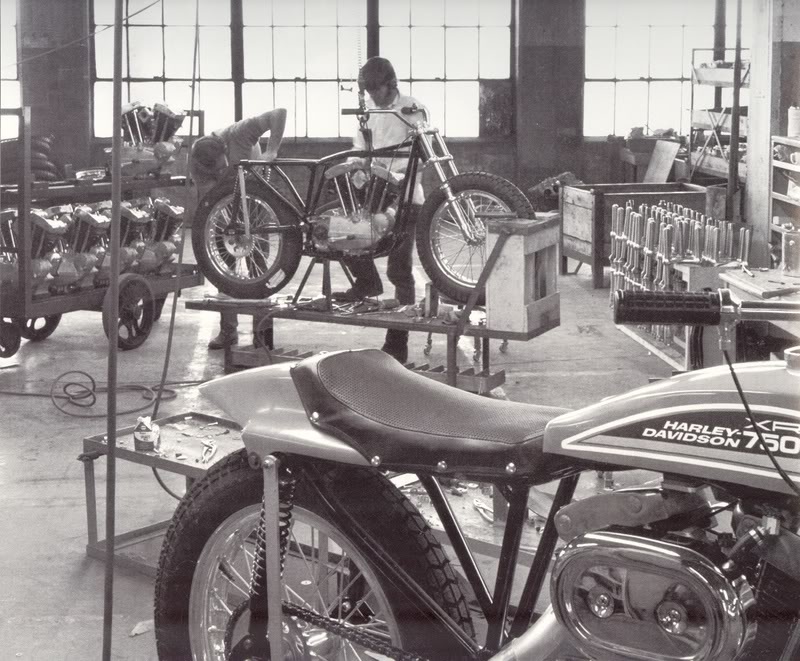
Harley-Davidson Motorcycles and Factory From Their Early Days, 1900s-1930s

Harley-Davidson Motorcycles and Factory From Their Early Days, 1900s-1930s

Mueller Cycle and Supply Co. window display showcasing two Harley-Davidson® bicycles. It features fishing equipment, and a screen with military images. Marketing materials are framed at the front of the display where passersby can read them. 1919.

1930: Harley-Davidson Motorcycle Dealer Display Window.

Harley-Davidson Motorcycles and Factory From Their Early Days, 1900s-1930s
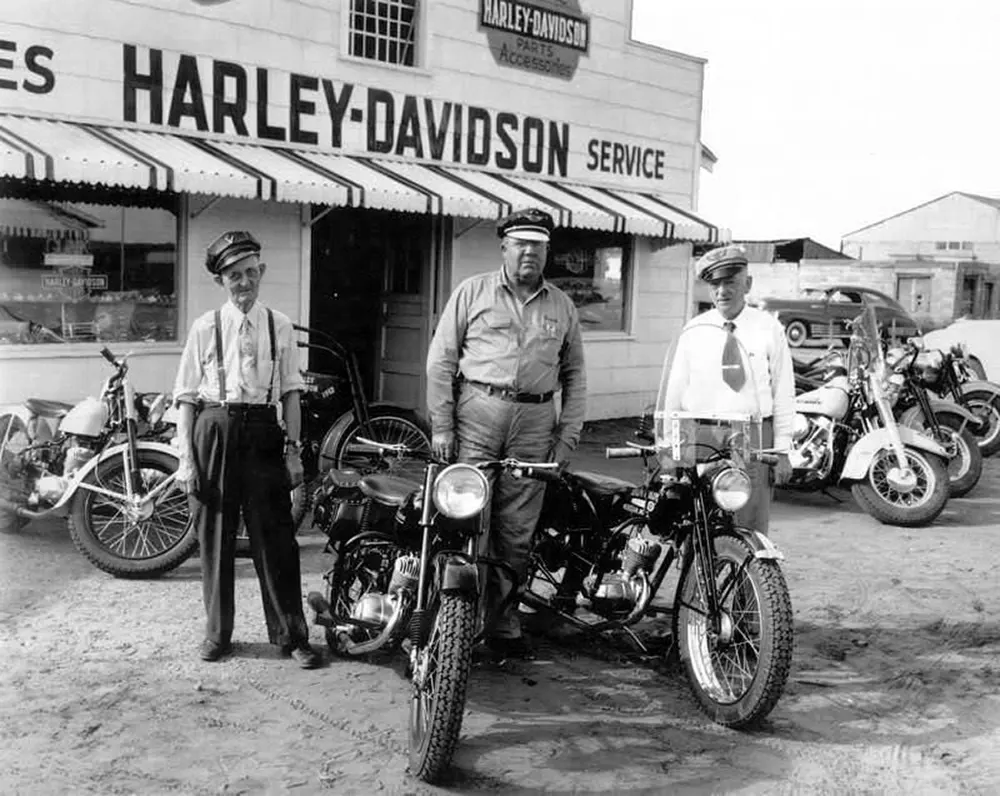
Harley-Davidson Motorcycles and Factory From Their Early Days, 1900s-1930s

Harley-Davidson Motorcycles and Factory From Their Early Days, 1900s-1930s
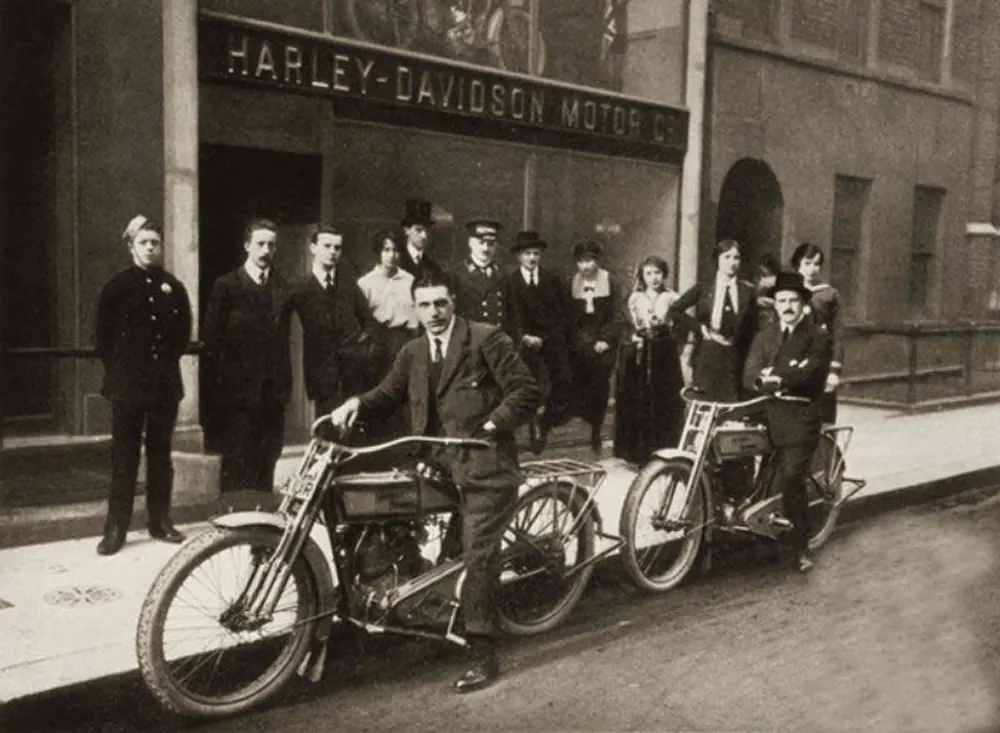
Harley-Davidson Motorcycles and Factory From Their Early Days, 1900s-1930s
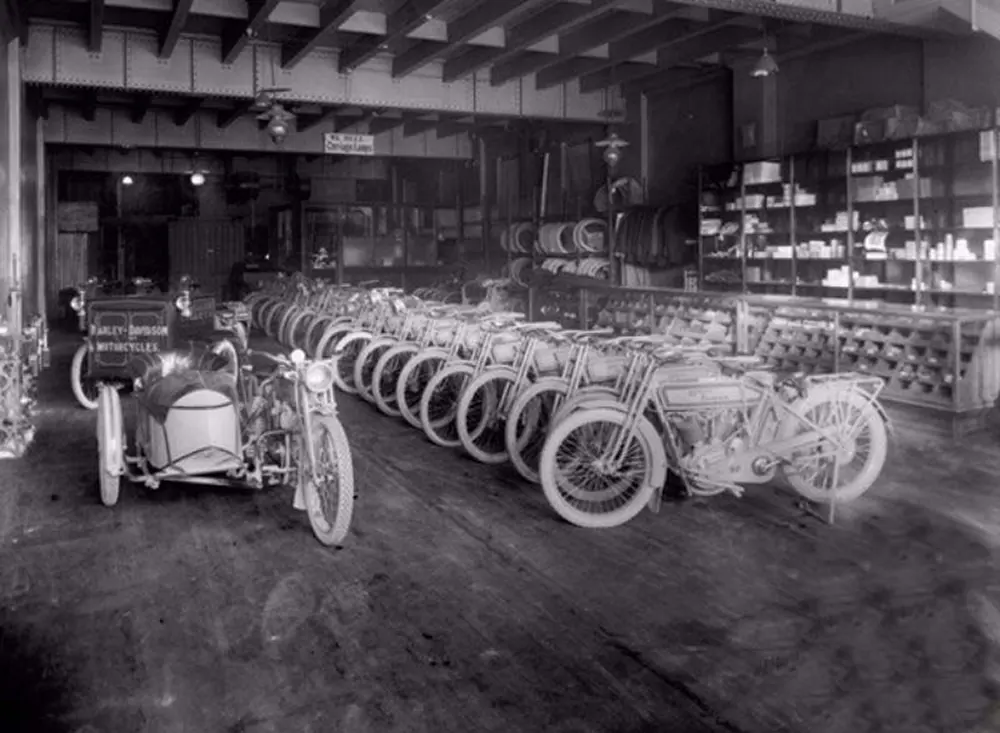
Harley-Davidson Motorcycles and Factory From Their Early Days, 1900s-1930s
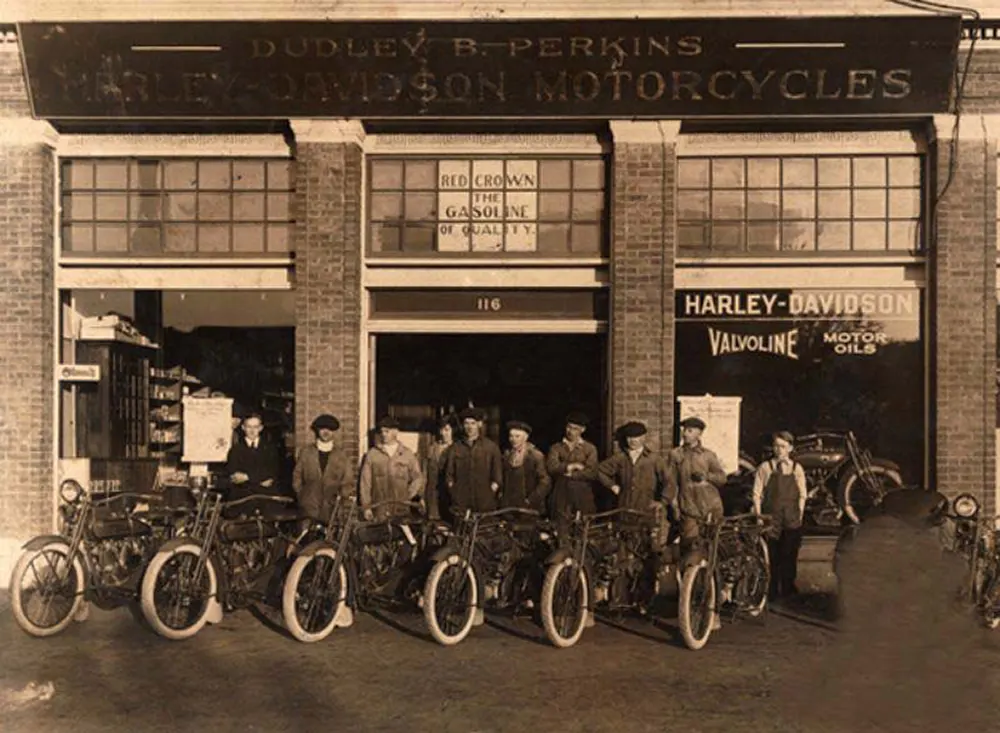
Harley-Davidson Motorcycles and Factory From Their Early Days, 1900s-1930s

Harley-Davidson Motorcycles and Factory From Their Early Days, 1900s-1930s

Harley-Davidson Motorcycles and Factory From Their Early Days, 1900s-1930s
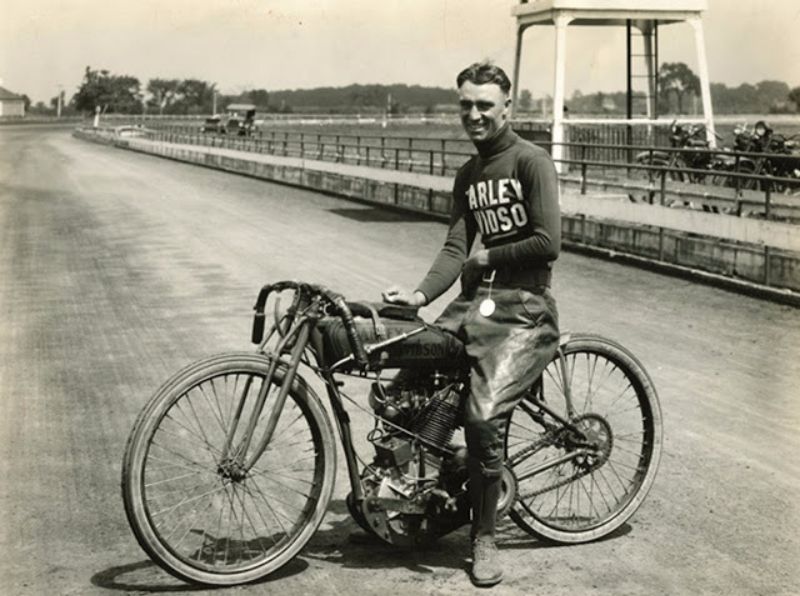
Harley-Davidson Motorcycles and Factory From Their Early Days, 1900s-1930s

Harley-Davidson Motorcycles and Factory From Their Early Days, 1900s-1930s

Harley-Davidson Motorcycles and Factory From Their Early Days, 1900s-1930s

Harley-Davidson Motorcycles and Factory From Their Early Days, 1900s-1930s

Harley-Davidson Motorcycles and Factory From Their Early Days, 1900s-1930s

Harley-Davidson Motorcycles and Factory From Their Early Days, 1900s-1930s
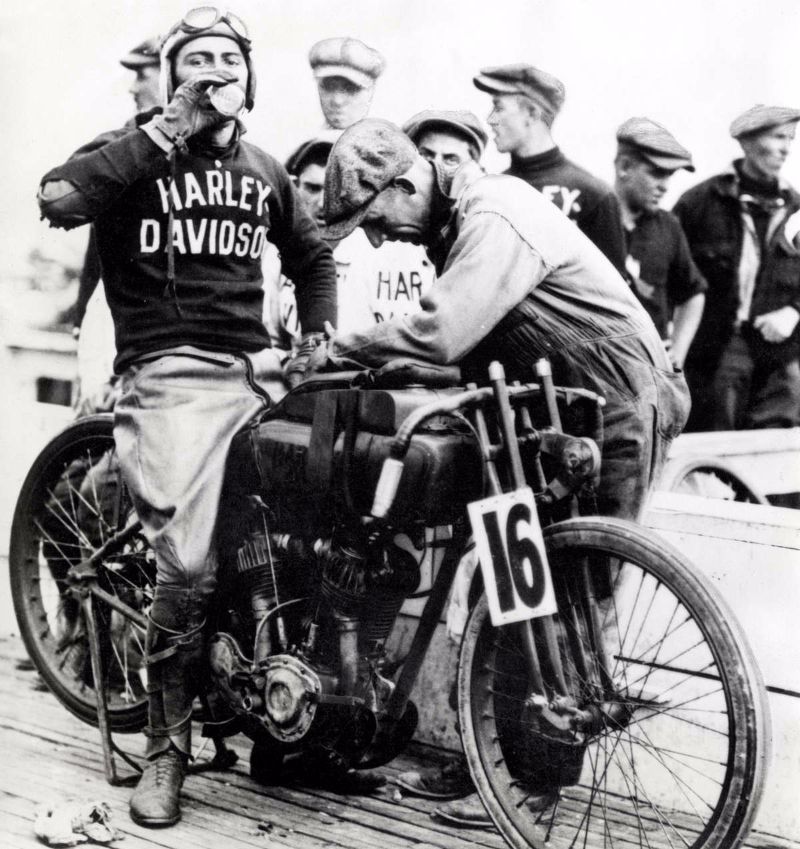
(Photo credit: Harley-Davidson Company / Wikimedia Commons / Pinterest / Flickr / Google Arts & Culture).